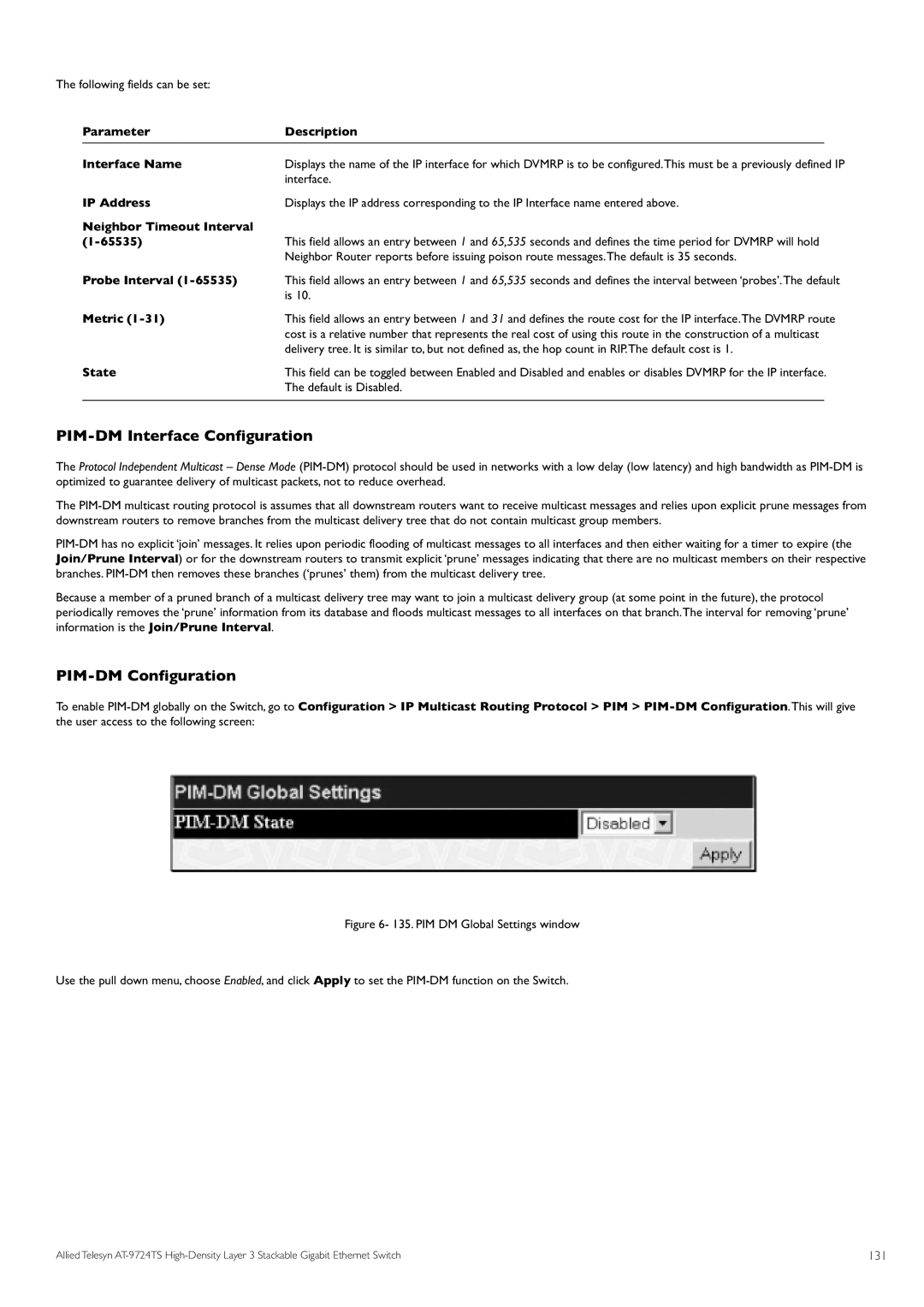
The following fields can be set: |
|
| |
| Parameter | Description |
|
| Interface Name | Displays the name of the IP interface for which DVMRP is to be configured.This must be a previously defined IP | |
| IP Address | interface. | |
| Displays the IP address corresponding to the IP Interface name entered above. | ||
| Neighbor Timeout Interval | This field allows an entry between 1 and 65,535 seconds and defines the time period for DVMRP will hold | |
| Probe Interval | Neighbor Router reports before issuing poison route messages.The default is 35 seconds. | |
| This field allows an entry between 1 and 65,535 seconds and defines the interval between ‘probes’.The default | ||
| Metric | is 10. | |
| This field allows an entry between 1 and 31 and defines the route cost for the IP interface.The DVMRP route | ||
|
| cost is a relative number that represents the real cost of using this route in the construction of a multicast | |
| State | delivery tree. It is similar to, but not defined as, the hop count in RIP.The default cost is 1. | |
| This field can be toggled between Enabled and Disabled and enables or disables DVMRP for the IP interface. | ||
|
| The default is Disabled. |
|
PIM-DM Interface Configuration
The Protocol Independent Multicast – Dense Mode
The
Because a member of a pruned branch of a multicast delivery tree may want to join a multicast delivery group (at some point in the future), the protocol periodically removes the ‘prune’ information from its database and floods multicast messages to all interfaces on that branch.The interval for removing ‘prune’ information is the Join/Prune Interval.
PIM-DM Configuration
To enable
Figure 6- 135. PIM DM Global Settings window
Use the pull down menu, choose Enabled, and click Apply to set the PIM-DM function on the Switch.
Allied Telesyn | 131 |
